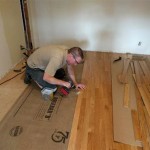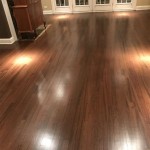DIY Bamboo Flooring: An Affordable and Eco-Friendly Flooring Solution
Bamboo flooring is a popular choice for homeowners who are looking for an affordable, eco-friendly, and attractive flooring option. Bamboo is a rapidly renewable resource that is more durable than many other types of flooring, making it a great investment for your home.
Benefits of DIY Bamboo Flooring
There are many benefits to choosing DIY bamboo flooring for your home, including:
- Affordability: Bamboo is a relatively affordable flooring option, especially when compared to other types of hardwood flooring.
- Eco-friendliness: Bamboo is a renewable resource that is harvested without damaging the environment.
- Durability: Bamboo is a very durable flooring material, making it a great choice for high-traffic areas.
- Attractiveness: Bamboo flooring is available in a variety of colors and styles, so you can find the perfect look for your home.
- Easy to install: Bamboo flooring is easy to install, even for do-it-yourselfers.
How to Install DIY Bamboo Flooring
If you're thinking about installing DIY bamboo flooring in your home, here are a few steps to get you started:
- Prepare the subfloor: The first step is to prepare the subfloor by making sure it is level and smooth. You may need to use a leveler or sander to get the subfloor ready for the bamboo flooring.
- Install the underlayment: The next step is to install the underlayment. Underlayment helps to protect the bamboo flooring from moisture and provides a cushion for the flooring.
- Lay the bamboo flooring: Now you can start laying the bamboo flooring. Start in a corner of the room and work your way out. Use a spacers to make sure the planks are evenly spaced.
- Nail or glue the bamboo flooring: Once the bamboo flooring is laid, you will need to nail or glue it down. If you are nailing the flooring, use a flooring nailer and 1 1/2-inch nails. If you are gluing the flooring, use a construction adhesive.
- Trim the flooring: Once the bamboo flooring is installed, you will need to trim it around the edges of the room. You can use a jigsaw or a circular saw to trim the flooring.
- Finish the flooring: The final step is to finish the flooring. You can use a polyurethane or a wax finish to protect the flooring and give it a shine.
Tips for Installing DIY Bamboo Flooring
Here are a few tips for installing DIY bamboo flooring:
- Make sure the subfloor is level and smooth before you start installing the bamboo flooring.
- Use a spacers to make sure the bamboo flooring planks are evenly spaced.
- Nail or glue the bamboo flooring down securely.
- Trim the bamboo flooring around the edges of the room before you finish it.
- Use a polyurethane or a wax finish to protect the bamboo flooring and give it a shine.
Conclusion
DIY bamboo flooring is an affordable, eco-friendly, and attractive flooring option for your home. With a little planning and effort, you can install DIY bamboo flooring in your home and enjoy the benefits for years to come.

How To Install Bamboo Flooring Floated Diy Method

Inexpensive Flooring Options Ideas Instead Of Hardwood Family Handyman

Kitchen Floor Ideas On A Budget Top Picks Expert Tips

Easiest 5 Diy Flooring Solutions Learn To Install On Your Own Inc

Easiest 5 Diy Flooring Solutions Learn To Install On Your Own Inc

Inexpensive Flooring Options Ideas Instead Of Hardwood Family Handyman

Bamboo Flooring Pros And Cons Forbes Home

Inexpensive Flooring Options Ideas Instead Of Hardwood Family Handyman

Diy Wood Floors For Beginners Beyond Floorings

Diy Wood Floors For Beginners Beyond Floorings
See Also







